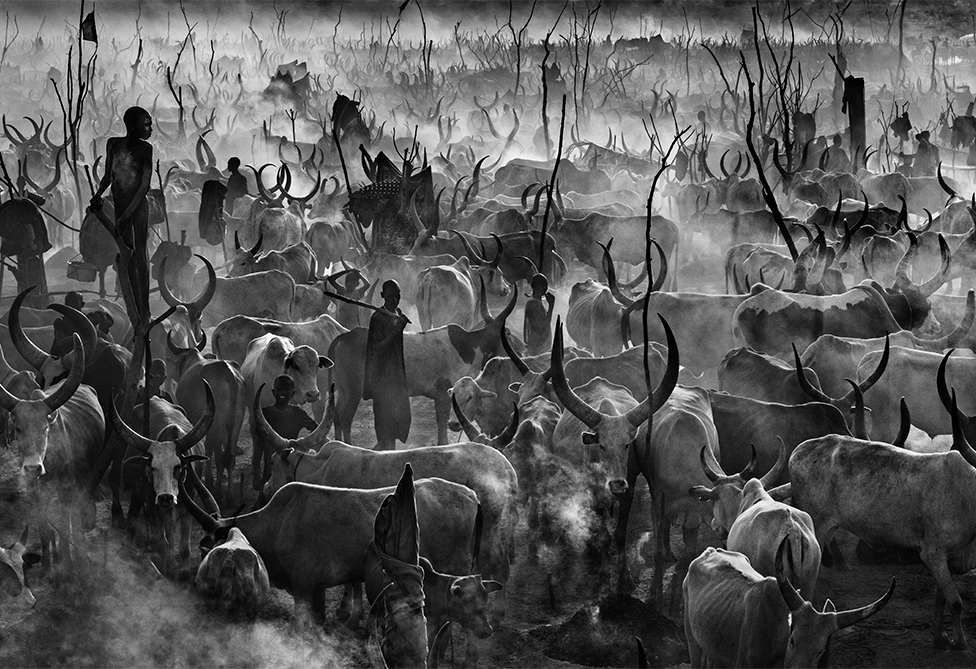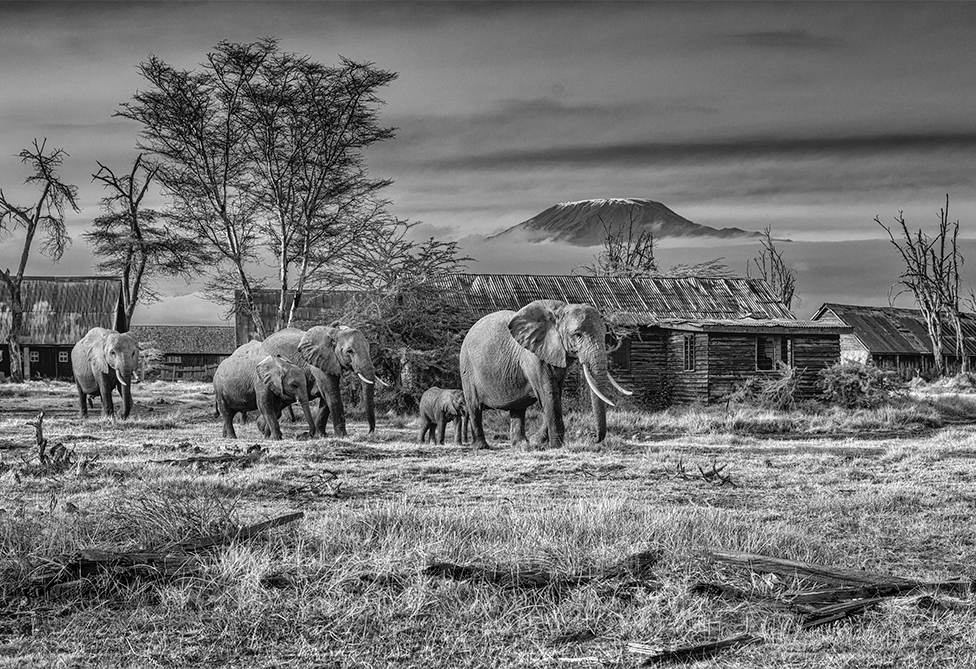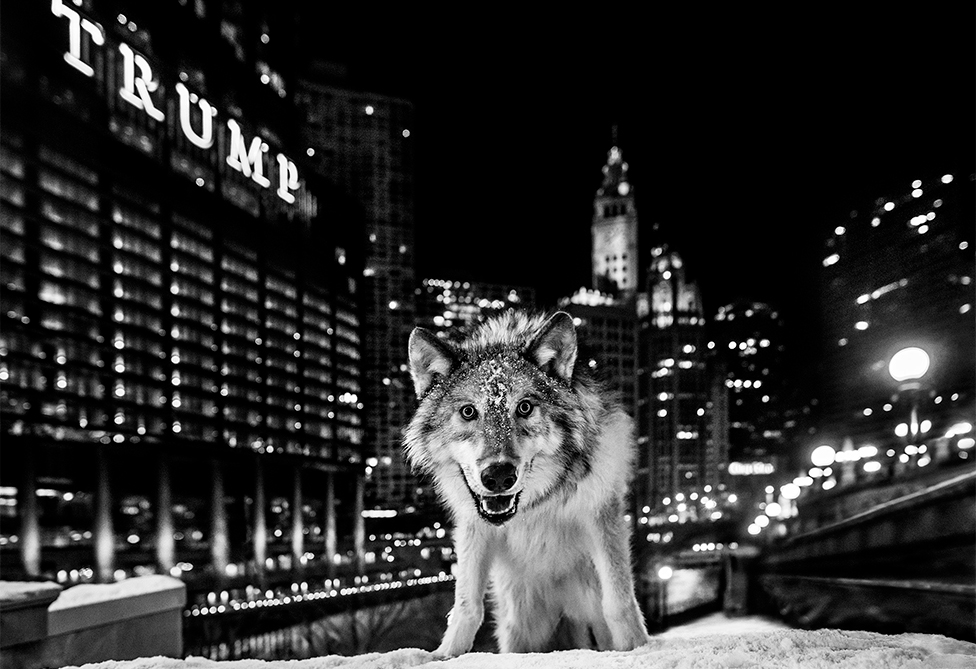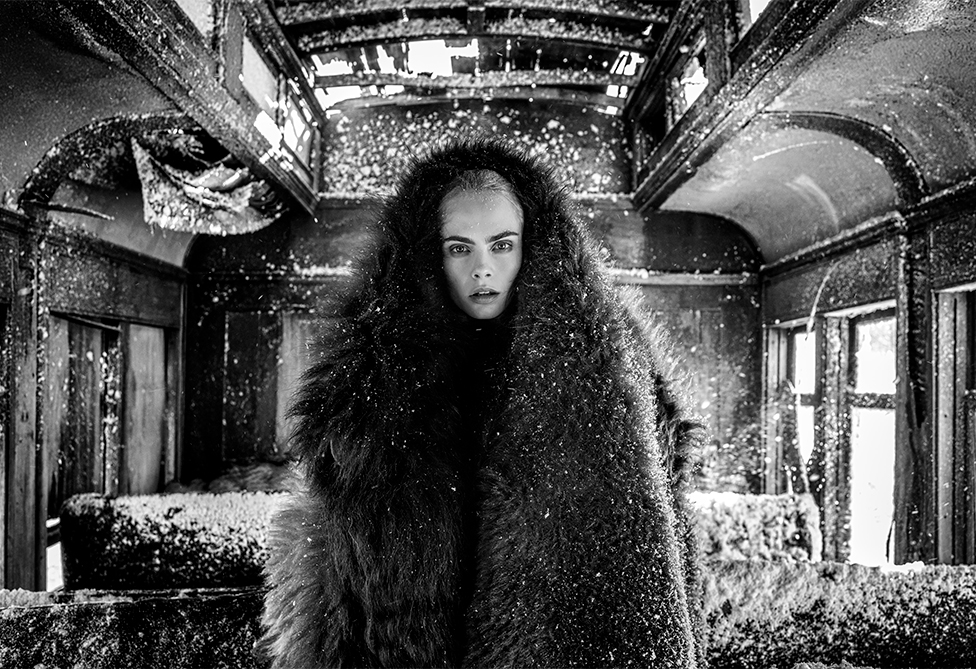The big interview: Photographer David Yarrow on his world in focus
David Yarrow, one of the world’s best-selling photographers, talks candidly to The Wealth Report about his career, supermodels, football, politics, conservation and more.
11 minutes to read
It’s the week after the bad-tempered US presidential election, and my trans-Atlantic Zoom call with the photographer David Yarrow, best known for his stunning black and white images of wildlife, gets off to an inauspicious start as we mouth silently at each other like Tweeting politicians for what feels like an eternity.
When the technology eventually sorts itself out he apologises if he sounds tired; he’s recovering, he says, from a “bit of a late night” following the Dallas opening of his latest collection of images, which was attended by more than 200 guests. “It’s one of the cities where I sell the most pictures,” he explains.
"A constant challenge in my work is how to capture the soul of a subject while conveying a sense of place"
I momentarily feel bad for getting him out of bed so early – it’s only 8am Dallas time – but the thought quickly dissipates. With the UK languishing through its second Covid-19 lockdown at the time, the idea of even attending a party, let alone one carrying on into the early hours in another country, seems a forlorn hope.
But he sounds in pretty good form, especially as he’s just recovered from a dose of Covid-19. As a proud Scot, perhaps the adrenalin rush of his country’s football team qualifying for the delayed Euro 2020 finals – their first major finals in 23 years – by winning a tense game against Serbia on penalties the previous afternoon is still kicking in.
“We were watching it in a bar and it got pretty stressful when Serbia equalised right at the end of the game,” he says. “I can get pretty passionate about football, so there might have been a few glasses smashed if we’d have lost.”
Football, it would be fair to say, has played a pivotal role in Yarrow’s career. Working for The Times, his image of Diego Maradona holding aloft the FIFA World Cup Trophy surrounded by a mass of jubilant fans after Argentina won the 1986 tournament in Mexico remains one of the game’s most iconic images – gaining an added poignancy following Maradona’s recent death – and cemented his reputation as a photographer.

The man himself is quick to downplay things. “I got lucky, it was one of the few decent photographs I took at that tournament. I was never really a very good sports photographer.” In fact, it wasn’t long before he turned his back on photojournalism – “too many photographers taking the same images and chasing too little money, too few role models” – to embark on a new career as a banker and fund manager in the UK and US.
Eventually, after surfing the latter stages of the first tech boom and surviving 9/11 with his fund intact – he sold everything as soon as the first plane hit the Twin Towers – but seeing his marriage fall apart, disenchantment set in and he was lured back to the world of photography, this time focusing on fine art prints sold through galleries.
Total acceptance didn’t come immediately, but a last-minute decision to fly to South Sudan, then in the midst of a civil war, rather than spending Christmas Day at home without his two children, proved a turning point. An influential gallery owner in Palm Beach, having turned him down five times previously, decided to snap up the unique and highly evocative shots of Dinka tribesmen and their cattle that resulted from the trip. “I’m very proud of those pictures,” he says when I ask him later which of his images he’s most fond of.
Africa, its people and, in particular, its wildlife have provided a constant source of inspiration during this second phase of Yarrow’s photographic career. He spent much of 2020 there, criss-crossing East Africa’s borders. “I think I’ve had to quarantine at least 12 times,” he says.
I ask him, given that we are fed an almost constant stream of bad news stories about Africa’s conservation efforts, whether he feels as if he might be documenting the last gasp of the continent’s seminal species. Despite last night’s exertions, it’s the only time during our long conversation that he sounds at all irritated.

“Yes, I do get fed up with it,” he says. “I don’t mean with your question – you’re just reporting what you watch or read – but with all the conservation NGOs who can’t seem to say anything positive. If, say, you were supporting a cancer research charity, you’d want to hear about their success stories. The same goes for conservation – and there are plenty of successes to shout about.”
He reels off a few examples: elephant populations in Kenya’s Tsavo and Amboseli National Parks are rebounding strongly, while rhino poaching in the country has largely been controlled; and Rwanda is enjoying considerable success in nurturing its mountain gorilla population – 24 babies have been born in the past year alone.
"The people out there who are saying that the whole Covid-19 thing, that people flying less, has been good for the environment just don’t know what they are talking about"
When I venture that much of the money to fund these wins has come from tourist dollars and that the drop in international travel due to the pandemic could have a knock-on impact on conservation projects, he agrees and takes aim again. “The people out there who are saying that the whole Covid-19 thing, that people flying less, has been good for the environment just don’t know what they are talking about.”
When I ask him what it was like to be in the US during the ugliest presidential election in living memory and whether photographing what one imagines would be a broad cross-section of the electorate – from Montana cowboys to west coast supermodels – over the course of the campaign has given him an inkling of why the country has become so polarised, it’s not Donald Trump he immediately points the finger at.
“On the actual day of the election I was up in Montana shooting with Cara Delevingne and this hyper wokeness that’s coming out of places like California just doesn’t resonate there at all.”
Trump’s big mistake, he reckons, actually came after the election when he refused to concede. “I was at Augusta taking some pictures of the golfer Gary Player who’s a good friend. If anywhere in the US is going to be Republican it’s a golf club, but everybody there was saying he’d got it wrong.”

Despite the acclaim his work receives and the many millions of dollars he’s raised for conservation and children’s causes – he flew to Australia early last year to document the bush fires and raise funds for the affected wildlife – Yarrow himself has had to endure some criticism of his style and methods.
Not long before our chat a minor social media storm had erupted over a picture he’d taken in Amboseli featuring a glamorous model standing in front of Craig, one of Kenya’s 20 or so remaining tuskers – elephants with ivories so long they churn the red African soil as they walk.
Although he dealt with the criticism with good grace – engaging with his accuser – he says he has had to become more cautious about how his images might be perceived, and particularly any suggestion that he might be objectifying his female models.
Wildlife photographers have also chided him for using animals as props in some of his most famous images such as the Wolf of Wall Street. But he’s quick to respond that they are missing the point; he’s an artist who goes to great lengths to ensure every element of his images is meticulously planned – often at great expense – not a wildlife photographer “staring down a very long lens at something in the distance”.
“If one of those photographers looks in my diary and sees that I’m taking pictures of animals on Monday and then doing a portrait of somebody on Wednesday, they might say, ‘oh, you’re obviously not a wildlife photographer, I can only do animals, not people’. I just don’t get it. Why shouldn’t you be able to do both, why would you pigeonhole yourself?”
That’s not to say he doesn’t have huge empathy with the wild animals he works with. Getting close up and using his favoured wide-angled lenses means Yarrow’s images often seem to offer more of a window into his subject’s existence and their relationship with their environment.
“A constant challenge in my work is how to capture the soul of a subject while conveying a sense of place. It is a complex alchemy, but two of my idols, Spielberg and Scorsese, have an innate ability to do this that is transcendental. What I also aim to create are images that people want to spend a long time in front of. If you go to see Rembrandt’s Night Watch you can easily look at it for half an hour. That’s what I want to achieve.”
It’s interesting that he names commercially successful filmmakers as his heroes. I debate with Yarrow if perhaps there is also a wider issue at play here. Building on the lessons learned during his successful banking career, he has worked hard to create a brand and develop a profitable model for marketing and selling his prints – he even wrote a paper, The Smart Way to Monetize Strong Photography. Are there, I ask, some who cling to the idea of the poverty-stricken artist and feel that such self-promotion is not “the done thing”?
He laughs. “I’m not sure how successful a banker I really was, lucky perhaps, but you could be right. My mother was an artist who thought like that. Not making any money was almost something to be proud of.”

Speaking of money, photography is, to a certain extent, the poor relation of the art world. Yarrow’s prints sell for sizeable amounts and on the secondary market they achieve good prices at auction – three have sold for over US$100,000 – but, given he is arguably the leading exponent of his genre, they make somewhat less than an equivalently popular painter could expect to command.
"You can make money from art, but I still think it’s best to buy something because you love it"
The guide prices for an upcoming sale by Sotheby’s of works by Ansel Adams, one of the most influential photographers ever, seem modest, I venture. And, unless you are an Andreas Gursky, photographers are pretty underrepresented in major art galleries. Does he feel, I wonder, that photography is undervalued, or perhaps not even considered as art by some people?
“Because we generally produce our works in editions there is always going to be a sense that they aren’t perhaps as unique as a painting,” he says. “Some photographers haven’t always been completely transparent either, which has created confidence issues.
“When somebody spends a lot of money on a Hockney they know they are buying the only copy,” he continues. “I think my work sells for about the right price.” And is it an investment? “Most people who buy my prints aren’t planning to sell them,” he hedges. “You can make money from art, but I still think it’s best to buy something because you love it.”
When it comes to the question of photography as art, he doesn’t leap blindly to the defence. “It’s an interesting question. Are Annie Leibovitz’s portraits of celebrities art? Is somebody taking a picture of a tennis player with a telephoto lens art? Are all of Andreas Gursky’s pictures really art? I don’t necessarily think so.”
But, as we wrap up the interview, what he does admit is that he is still learning his craft. “There are animals I know I could shoot better, but Covid has meant I’ve had a lot more time to think about how I take pictures. I think some of the ones I’ve taken this year have been among my best. I’m certainly a better photographer than I was five years ago.” What’s his secret? “Be very hard on yourself – and get close.”
It’s also clear that despite mingling with supermodels and travelling the world there’s always something new to look forward to. “I’ve been invited by Willie Nelson to take some pictures at his home, which is very exciting – I’d like to take more pictures of men, I find them as interesting as women – and I’m hoping to get back to the Antarctic again soon.”
When the time comes to sign off, our Zoom call ends as it started – with a glitch. Despite punching “end meeting” the camera keeps rolling and I catch a jocular comment from a colleague of Yarrow’s who’s obviously been waiting for the interview to finish. It sounds like that opening night in Dallas really was a very good party indeed.